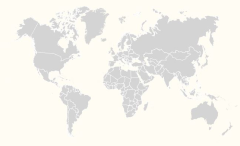Bror Julius Olsson Nordfeldt was an American artist who painted seascapes and depictions of New Mexico"s indigenous culture.
Background
He was born in Tullstorp, Malmö, Skåne County, Sweden the son of Nils and Ingrid (Nordfeldt) Olsson. He adopted his mother"s surname to avoid confusion with the maritime artist (Alfred) Julius Olsson, whose work was then becoming popular in Europe and America.
Education
He attended the Art Institute of Chicago and studied with Frederick Richardson. He later apprenticed with Albert Herter in New York City. He studied in Paris at the Académie Julian.
Career
The family immigrated to the United States in 1892. He first worked as a typesetter for the Swedish language newspaper, Det Rätta Hemlandet. During World War I he was in San Francisco where he registered for the draft.
During the war, Nordfeldt was assigned to San Francisco to supervise the camouflage of merchant ships.
After his service in World War I, he moved to Taos, New Mexico. In 1921, Nordfeldt joined the Taos Society of Artists.
In the late 1930s he relocated to Lambertville, New Jersey. Throughout the 1930s, Nordfeldt taught at various schools including Utah State College, the Wichita Art Association and the Minneapolis School of Artist
From 1941-1943, he was a guest professor for the Department of Art of the University of Texas.
Nordfeldt worked in diverse styles and media, including etchings and prints, portraiture, still lifes, and landscapes. Nordfeldt strove for a flattening of form and distortion of space, creating stylized images. He chose subjects laden with emotional power, especially nature and religious scenes.
Biographical sketches for Nordfeld are published in most standard art reference works.
His papers are held in the Manuscript Collections of the Archives of American Artist He died in Henderson, Texas on April 21, 1955.



